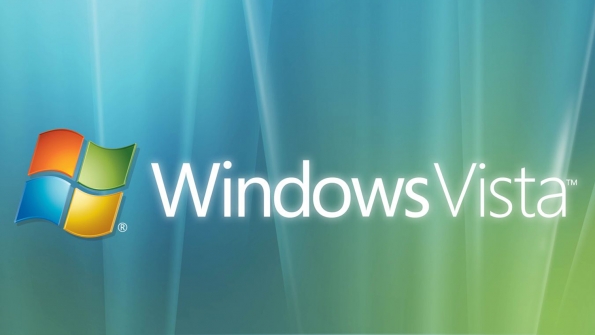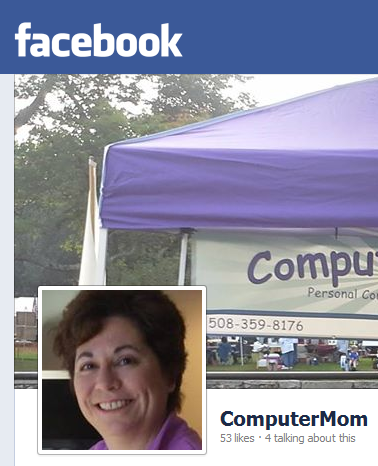| |
| Everyday Tips from the ComputerMom |
|
|
|
|
|
I guess the best thing to say about February is that it's nice of the calendar to give us a short month in the middle of winter. I don't want to jinx anything, but here's to a continuation of the relatively mild weather we've been having!
Windows Vista is coming to end of life, so any of you who are still running that older OS will have to make some decisions. This month's issue covers that topic, along with some tips for new Mac owners, and a Facebook Roundup.
Regards,
Julie Marto
PS - Go PATS!!!!!
|
|
 End of the road for Windows Vista End of the road for Windows Vista
Microsoft will stop issuing security updates for Windows Vista as of April 11th, 2017. Once security updates and patches are no longer provided, it's really not safe to use an operating system on the internet. Vista was never a very popular operating system, but I still see several computers running Vista each month.
If you are not sure which version of Windows your computer is running, follow the steps in this article to check. If it turns out you are using Vista, now is the time to make some upgrade decisions. Your options are as follows:
Upgrade to Windows 7 - although Microsoft is no longer officially selling Windows 7, I can still buy it from several sources. If you would like me to upgrade your system, a Windows 7 license will cost about $100.00, plus my flat rate to install it, update it, and make sure everything is working smoothly. Microsoft will continue to support Windows 7 until 2020, so you will buy a few years with this option. Because there is an upgrade path from Windows Vista to Windows 7, I can do this upgrade without changing any of your other programs or settings.
Upgrade to Windows 10 - Surprisingly, many older Vista systems run Windows 10 quite smoothly. Again, I will have to buy you a new Windows license, which will run about $120.00. Unlike the upgrade to Windows 7, I will have to format and reinstall your system to upgrade it to Windows 10. That means part of the upgrade process will involve reinstalling all of your software and your settings. If you go this route you might have to add more memory, and it might be a good time to upgrade your old hard drive to a solid state drive.
Purchase a new computer - Since Windows Vista was only sold between 2007 and 2009, your system is actually pretty old in PC terms, and it might just be time to replace it. I am happy to help you pick out a new computer and set it up for you, with all your pictures, documents, and emails in place.
If you are still using Windows Vista, please give me a call. We can discuss what your personal situation is and work out the best plan for you!
|
 Mac Tips for PC People Mac Tips for PC People
You know who you are. After years of using a PC, you finally broke down and bought a Mac. Everybody told you it would be easier, it wouldn't get any viruses, and it would make your life better. And now you have your nice, shiny new Mac . . .and you find yourself a bit perplexed.
I see people like you every week. As a matter of fact, I was one of you a short 8 years ago, before I bought my first MacBook and started to support Macs. So here are a few tips for the recent PC to Mac convert, to make your life easier!
Change your Finder so it opens up with the home page - The Finder is the little smiling guy on the very left of the dock. You click on him to navigate through the files and programs on your computer. For some reason, Apple thinks you want that to open with "All My Files". That will find your files, but you won't have a clue where they came from, or where they are hiding. My advice is to open the Finder, then click on Finder/Preferences. On the general tab you will see "New Finder windows show:" - choose the little house with your name on it. Next time you open the Finder you will see a neat arrangement of folders for your Desktop, Documents, Downloads, Pictures, etc.
Customize the Icons on the Dock - Looking at an icon for an application you never use? Click on it and drag it up onto the desktop until you see the word "remove" - then let go of your mouse, and voila, gone! Alternatively, to add icons to your Dock, open the Applications folder in the Finder, find the icon for the application you want to add, and drag it down onto the Dock where you want it to be. The Dock will automatically make space for your new icon.
Look for dots on the Dock to see what applications are open - Unlike on a PC, when you "close" an application by clicking the red X, it's actually still running. A small dot under the application icon on the Dock indicates a running application. If you want to actually turn the application off, bring it to the front by clicking on its icon, then quit the application by hitting command-q, or by clicking on the application name in the menu bar and choosing "quit".
if you find yourself having a difficult time with a PC to Mac transition, just give me a call and we can schedule an hour - I promise to leave you feeling a lot less confused!
|
 Facebook Roundup Facebook Roundup
Each month I post a few links to interesting articles on my Facebook page, but I know not all of you are Facebook users. In case you missed them, here are some of my recent posts:
If you are interested in reading these articles as I post them, just go to my Facebook page and click "like". |
|
| |
|
|
| |
|